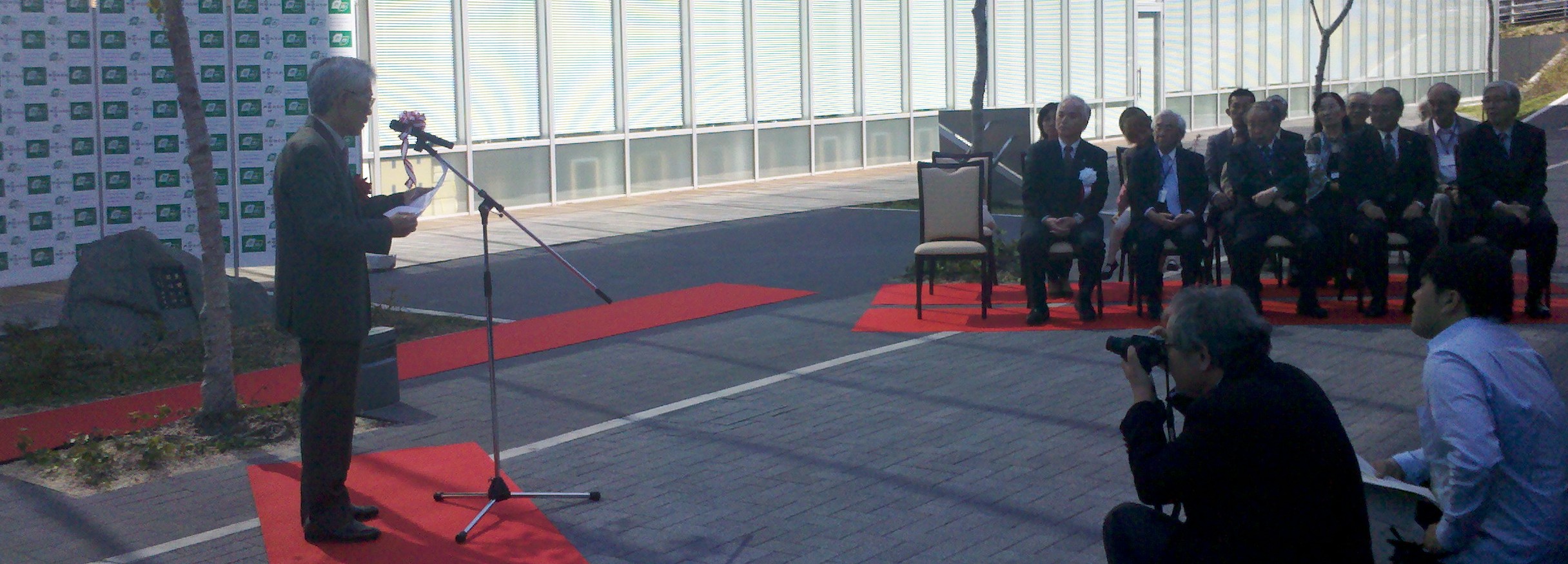Shoichi Sakata would have been 100 years old this year, and a conference celebrating his achievements in high-energy physics and beyond is underway here in Nagoya. The university president made brief introductory remarks, describing how, right after the war, Sakata introduced a democratically-inspired culture into the physics department, insisting on the right of young researchers to choose their own research paths independent of senior faculty, and permanently impacting the culture of physics (and beyond) at Nagoya University. There followed a talk reviewing Sakata’s most important work, including central contributions to the understanding of the muon, many of the hadrons, and the first two neutrinos. Unfortunately for Sakata, English publication of one of his most important papers (correctly identifying the muon as a decay product of an electrically-charged pion) was delayed by the war; another of his ideas (concerning the nature of hadrons) inspired many important developments, but was not itself correct; and a third idea (suggesting two neutrinos, which could oscillate one into the other) arrived just a bit too late to predict an experimental result. On top of this, he died young, before he was 60. Consequently, outside Japan he is not so widely known today. But here he casts a long shadow. Indeed, Professor Maskawa’s brief address at the opening of the Inaugural Conference of the Kobayashi-Maskawa Institute (earlier this week) was entirely devoted to lauding his mentor.

Tucked in among today’s talks, another ceremony, this one to unveil a memorial stone outside the Kobayashi-Maskawa Institute, in Sakata’s honor.
Unfortunately I cannot stay for the last day of the conference. An amusing feature of my journey home: I depart Tokyo at 5 pm on October 28th and arrive in New York City at 5 pm on October 28th.



6 Responses
Hi Matt
I couldn’t help noticing that your blog entry on climate change was followed by a flying visit to Japan. We recently published an article about how physicists could set an example by reducing their carbon footprint — not surprisingly, cutting down on conference travel figured highly. I wonder if you considered not travelling to Japan for that reason? You can read the article here: http://physicsworld.com/cws/article/indepth/47336
Cheers
Hamish
Dear Hamish Johnston,
Physicists and other scientists working on a certain topic in smaller groups dispersed all over the world necessarily have to travel to discusse new developments in their field face to face with colleagues at conferences or to visit other institutes to maintain international collaborations. This is very important and much more efficient to achieve good progress and results than video conferences etc …
I`ve read a similar article about astronomers seemingly having a larger footprint than the average US citizens in the German journal Physics Today.
Such discussions and corresponding investigations attacking physics and physicists or science and scientist in general are completely useless, pointless and off the base; in particular at such a nice physics blog as Prof. Strassler`s site.
I`m sorry but such comments (in particular if meant seriously ?) really disgust me 🙁
(I dont mind if Prof. Straossler decides td delete my comment)
[Unfortunately WordPress’s software seems to have deleted my reply, and I’m short on time so I’ll have to leave a short one.] I agree with your concerns, Hamish — though to some extent cutting back on travel has already largely happened for financial reasons. Already I only attend conferences if necessary (e.g. I am speaking, or communicating in person with certain other attendees is essential for my research.) Most conferences and meetings I attend by video. As you know there are limits to this approach; sometimes one-on-one conversations are essential for full exchange of knowledge. But our community will have to make sacrifices and compromises just like any other.
Hi,
Just saw your Blog mentioned on the BBC:
http://www.bbc.co.uk/news/science-environment-15471118
(sorry if already posted)
“I depart Tokyo at 5 pm on October 28th and arrive in New York City at 5 pm on October 28th.”
Yes, a ride on a neutrino beam must be involved in this journey, LOL 🙂
Faster than neutrinos !